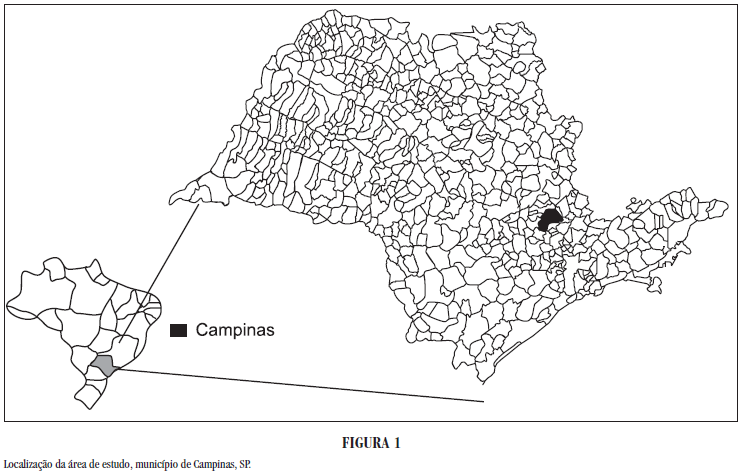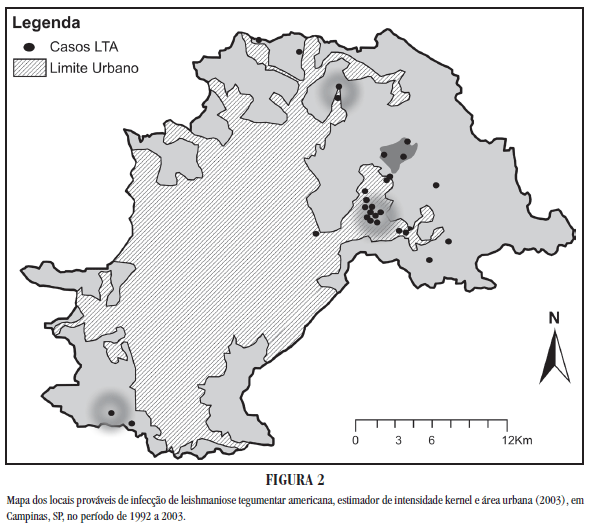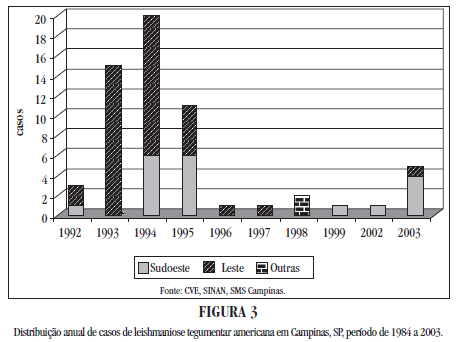This is a retrospective study with ecological features that describes the epidemiological pattern and geographical distribution of American tegumentary leishmaniasis cases in Campinas, São Paulo, between 1992 and 2003. The probable infection locations were georeferenced by means of Global Position System and spatially described using Spring 4.01 Beta software from the Brazilian National Space Research Institute. A kernel estimator was applied to identify areas of case concentration, three epidemic areas with higher case intensity were found in the municipal area in 1993/1995 and 2002/2003. Socio-demographic (gender, age, occupation, residence time), closeness of domicile to forest, and clinical form of the disease were studied. Although socio-environment characteristics of the areas were different, epidemics profile were similar. Age, sex and occupational distribution suggest peri-domestic transmission. Proximity to forest has being a risk factor.
American tegumentary leishmaniasis; Epidemiologic surveillance; Spatial analysis




